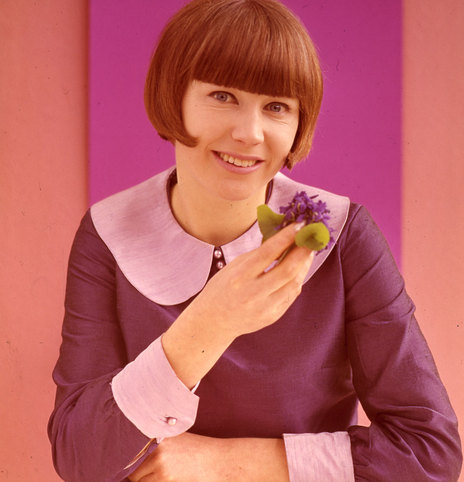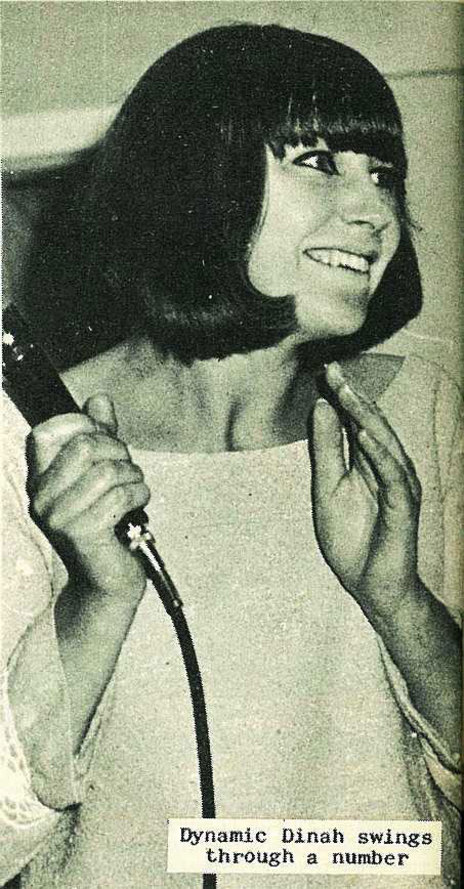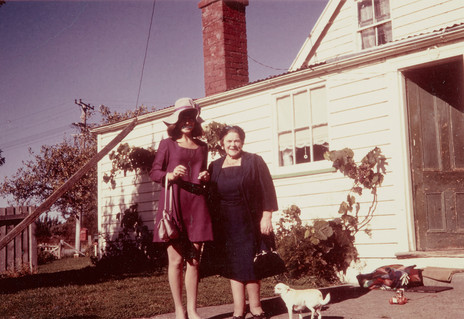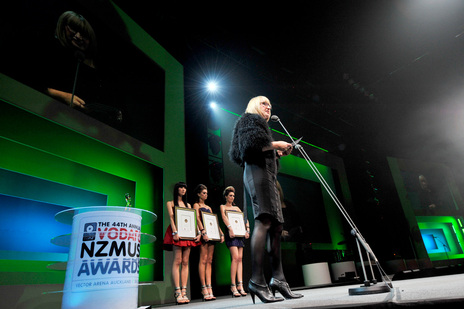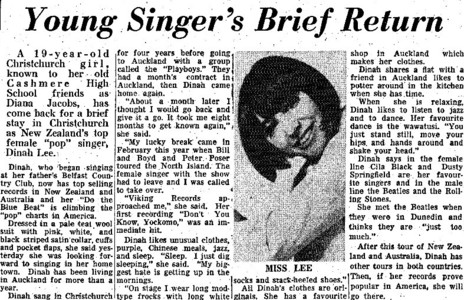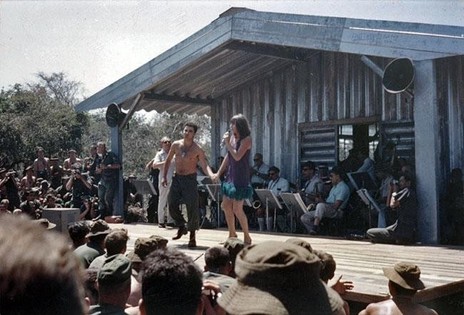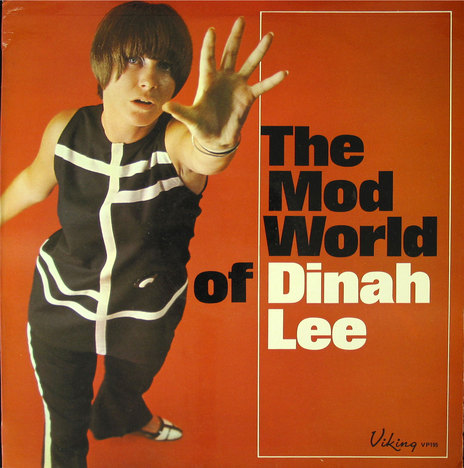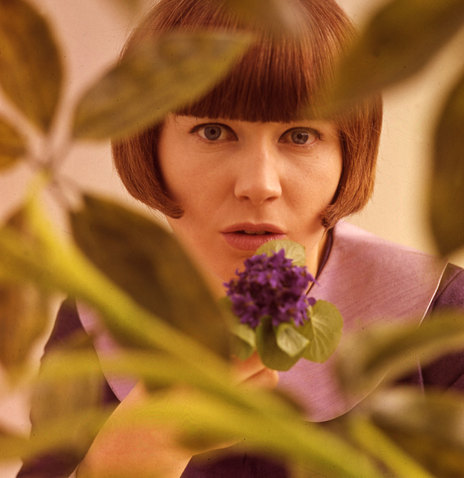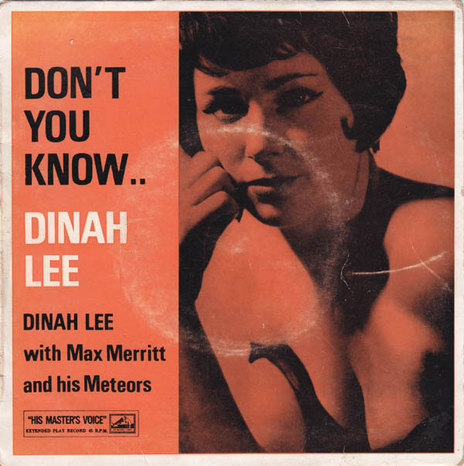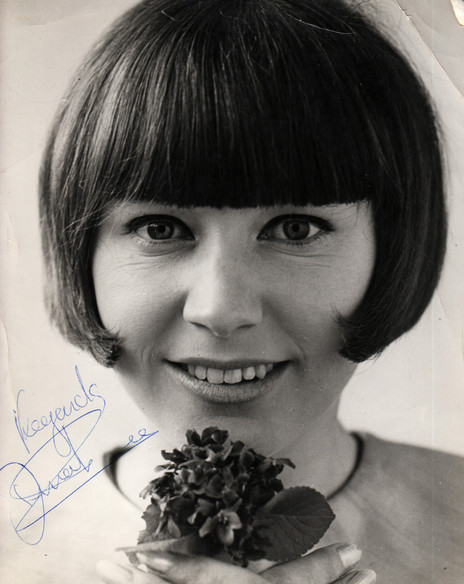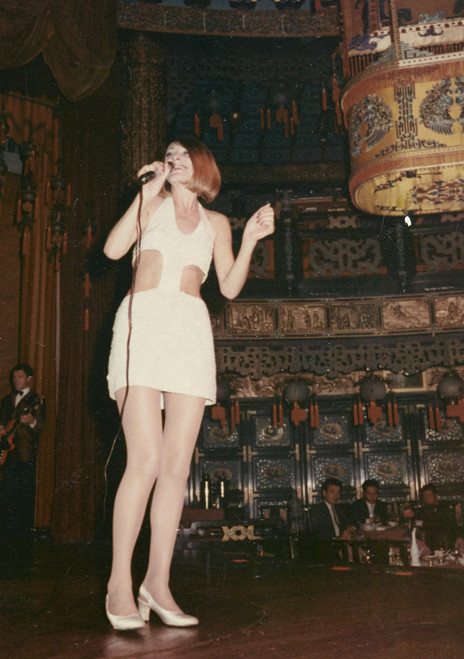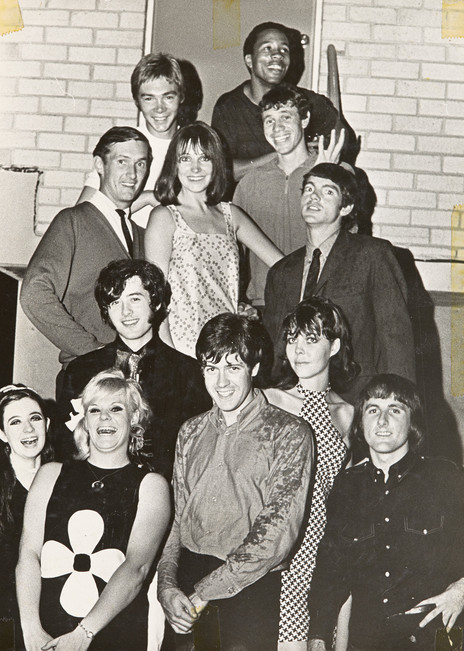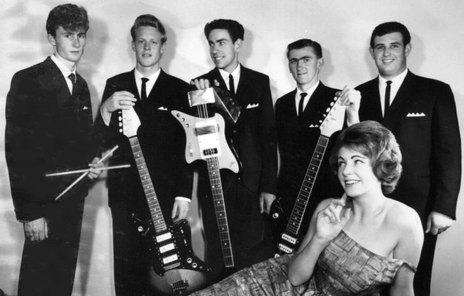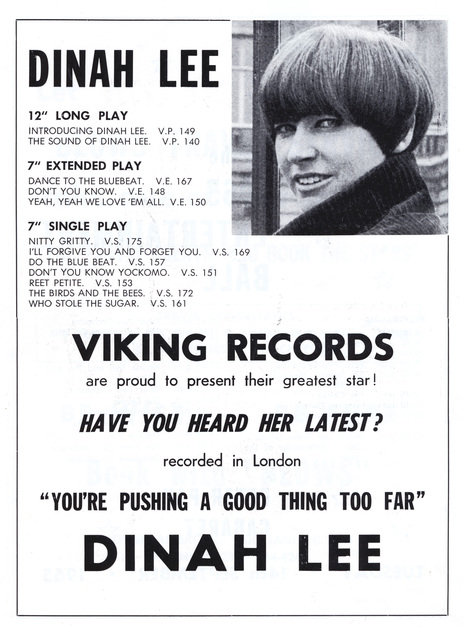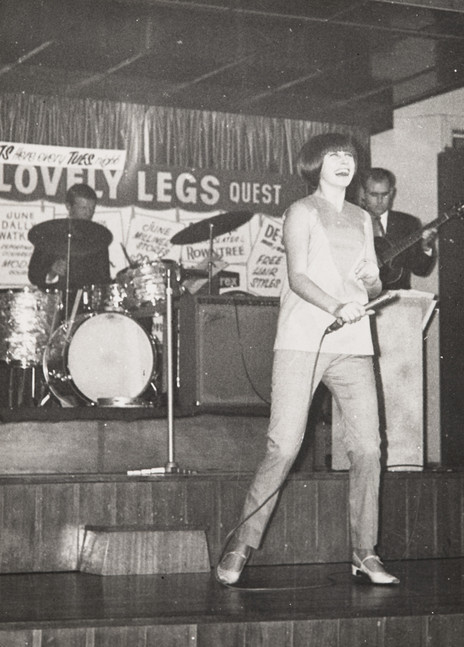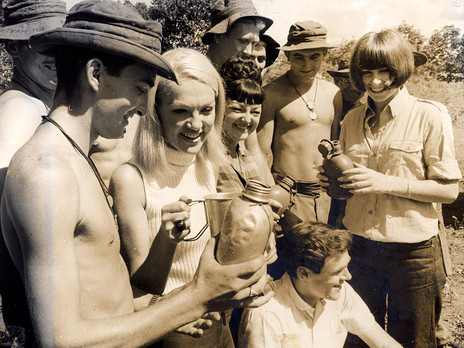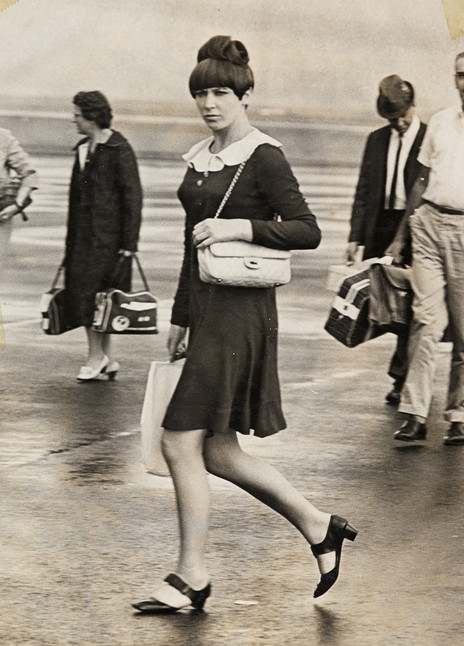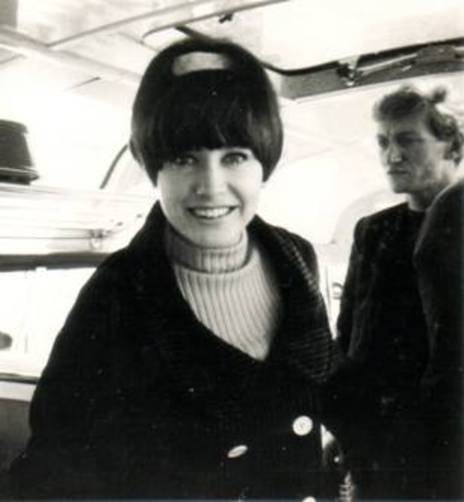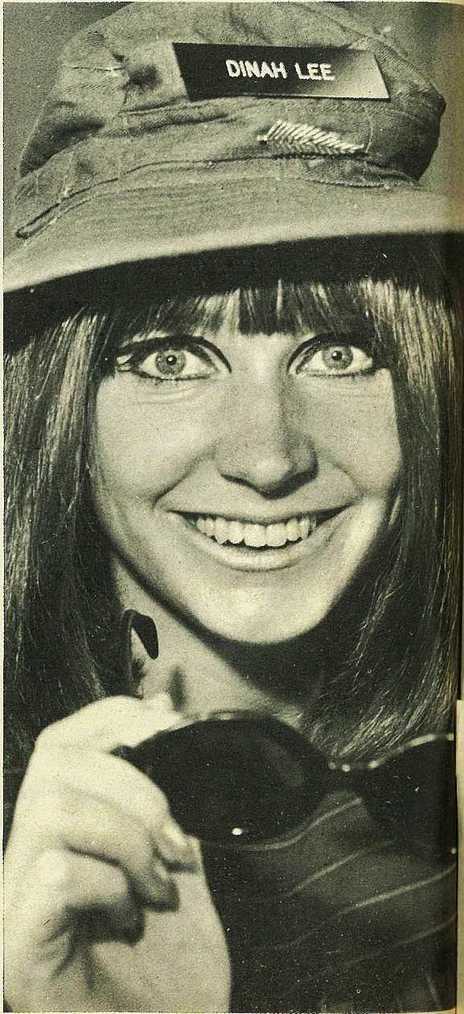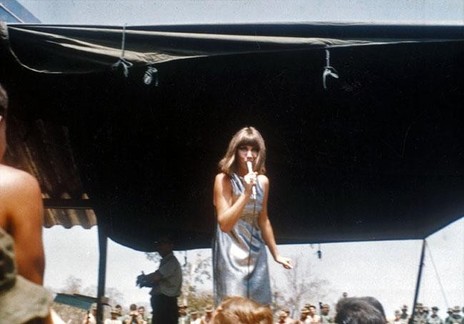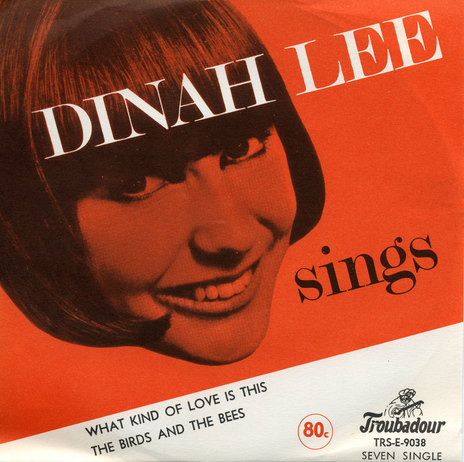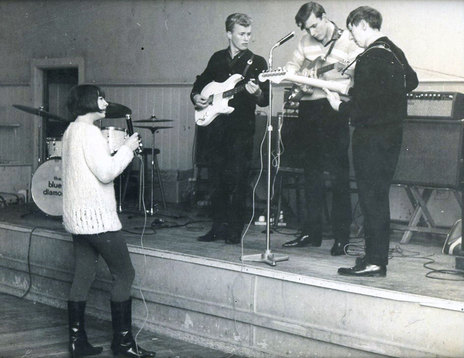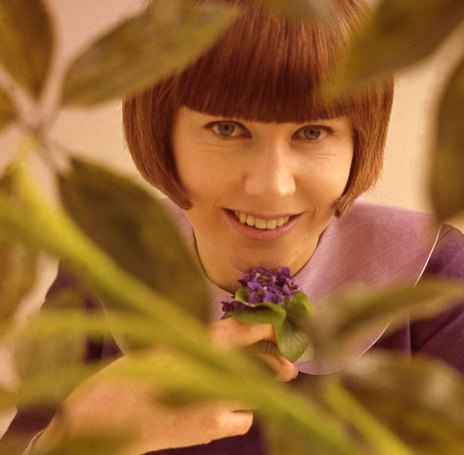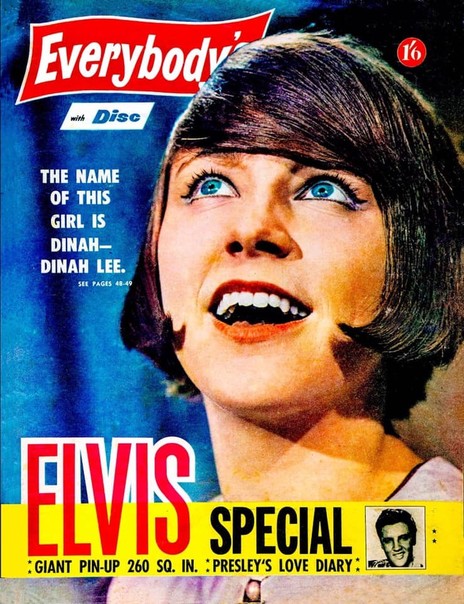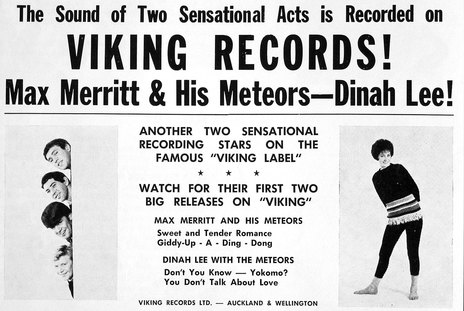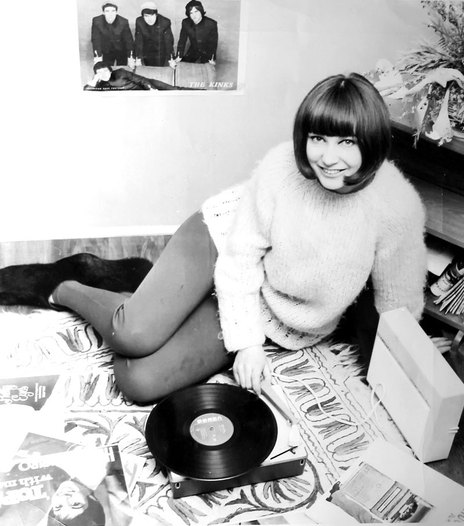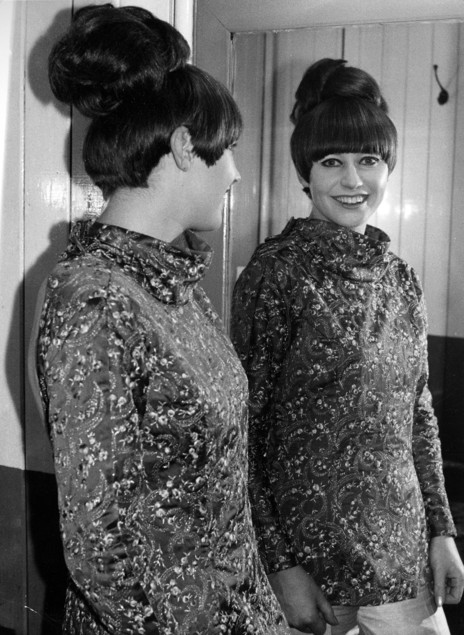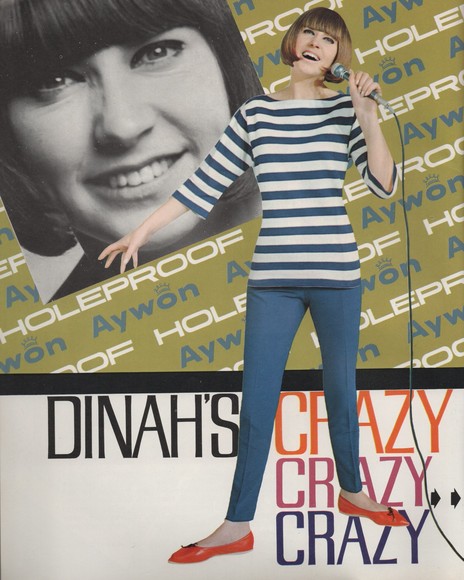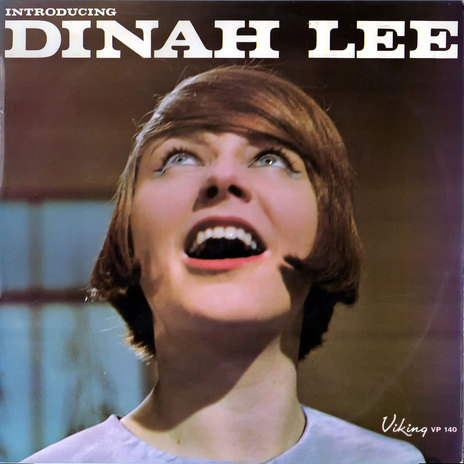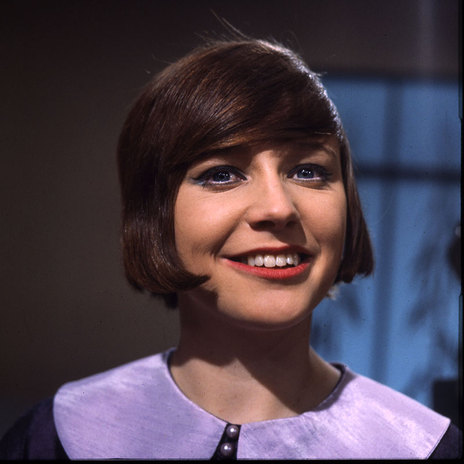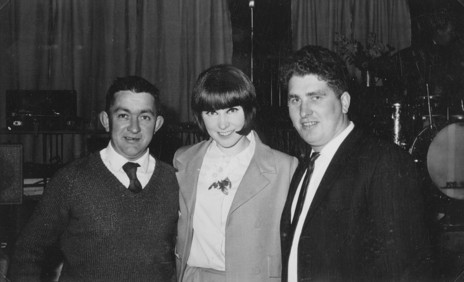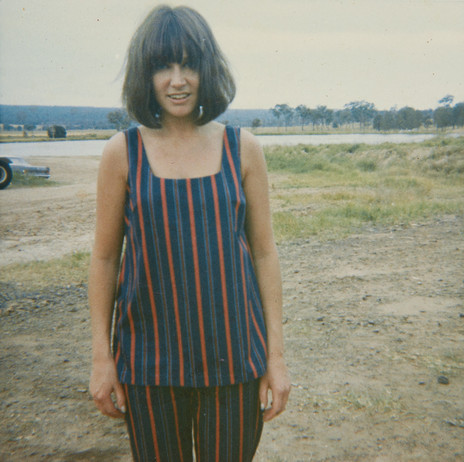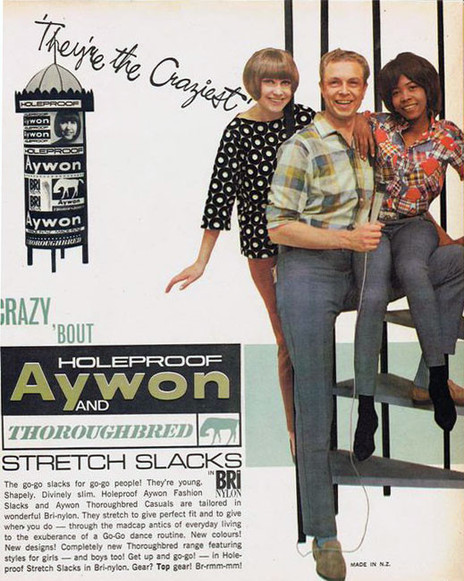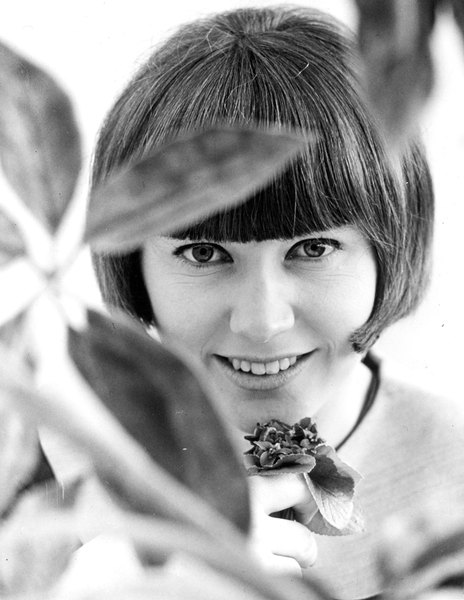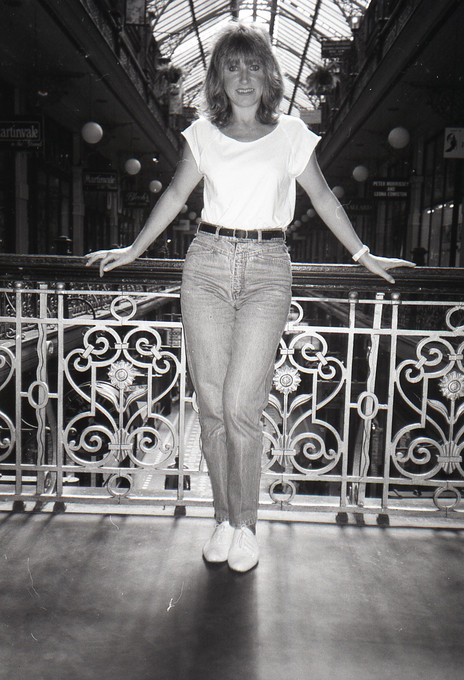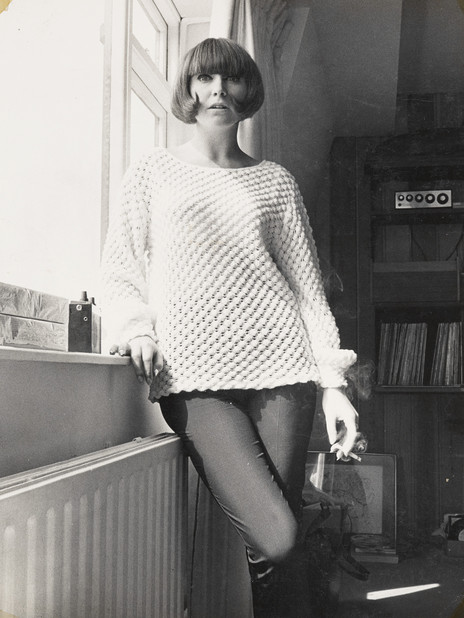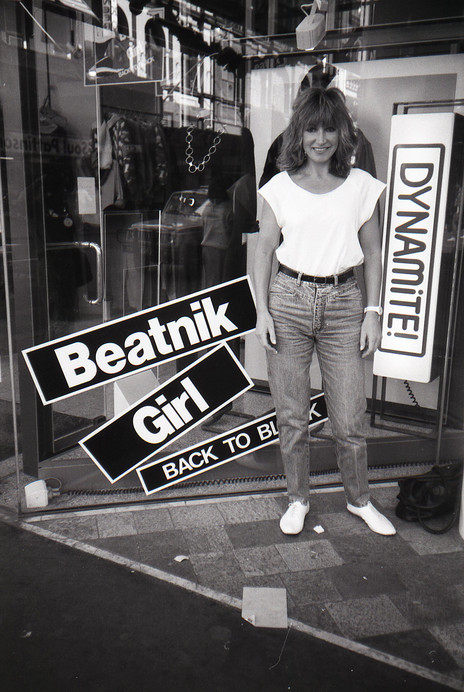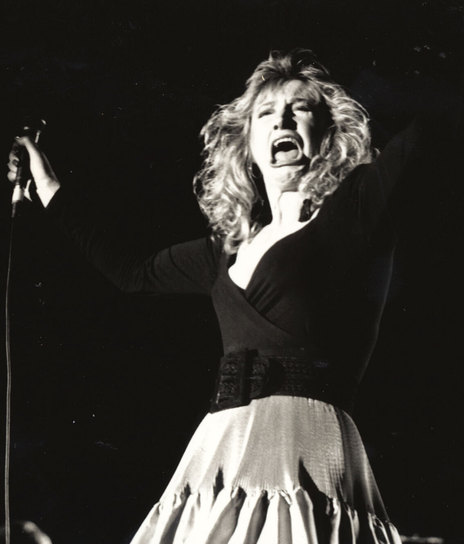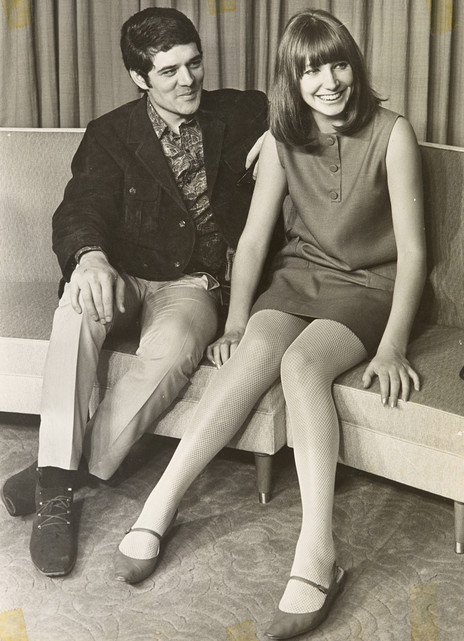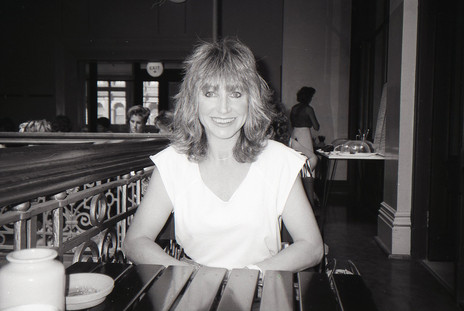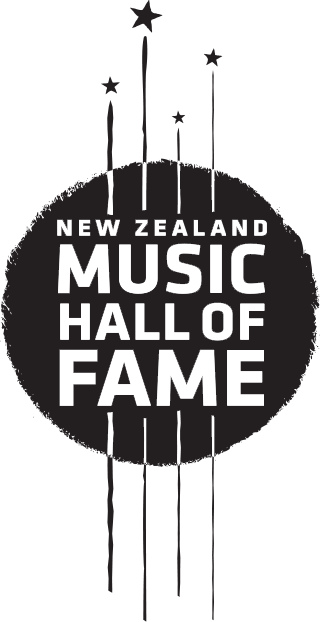Meanwhile, Australasia was bopping to Dinah Lee refrains: “a ling-ting-ting, a hey-ay-oh” from 1964’s ‘Don’t You Know Yockomo’; “look-a there, look-a there, oo-eee” from the Berry Gordy-penned ‘Reet Petite’, and “a chicky chicky chang chang”, from ‘Do the Blue Beat’.
The smiley, effervescent “Queen of the Mods” – as Dinah would quickly come to be known – was an unmatched, larger-than-life, fashion-forward presence on the New Zealand entertainment scene for an intensive few years in the mid-60s, with a voice that was sweet and poppy or raunchy enough to give her vocals an edge when a song demanded it.
She whizzed up the charts on both sides of the Tasman with a succession of hits and, with ‘Reet Petite’, became the first New Zealand female singer to achieve a No.1 in Australia. Lee was a fashion leader for her squadrons of fans, and by the end of the 60s had arguably become the standard by which every aspiring female pop artist in Australasia would be judged.
Diane Marie Jacobs, aka Diane Lee and ultimately Dinah Lee, was born in Waimate, South Canterbury, on August 19, 1943. Raised by foster parents in Christchurch after her parents separated, she attended Cashmere High School at the foot of the Port Hills. Young Diane found her niche in life early on when her sax-playing father, with whom she’d maintained contact, suggested she have a go on stage in his country club cabaret in Belfast, a northern suburb of Christchurch. She was 15, and the reception she got after she sang 1954’s ‘Pink Shoelaces’ by the Chordettes made up her mind: it would be singing all the way from then on.
As she grew up, Diane Jacobs performed wherever she could around the city, sharing the circuit and the stage with local performers, including Max Merritt and the Meteors – who would back her on many of her hits – and Ray Columbus and The Invaders. The “six o’clock swill” caused by the regulation early-hour closing of pubs was still happening, so band venues ranged from dance halls and nightclubs to coffee bars and dine-and-dance cabarets.
Key among the bands she sang with were the Saints and later the Playboys, the band she founded with her then-boyfriend, Phil Garland (1942-2017), later celebrated as New Zealand’s singing historian and folk troubadour.
Fashion featured as another creative outlet for Diane and she combined singing with modelling, winning a Miss Brighton contest, and expressing her personality in garments appropriate to each venue – ski-pants and polo-neck skivvies for coffee-bar gigs, and pert dresses she made herself for cabarets and clubs.
Attention on her was building and she did an eight-week stint hosting Christchurch TV’s Time Out for Talent, the show that launched Ray Columbus into the spotlight before he left for Auckland.
By 1963 the music scene was frothing with excitement and Beatlemania bubbled over into frenzy when the “Mop Tops” toured New Zealand in 1964. The energy rubbed off on all facets of the industry and many benefitted, not least among them the venue owners, TV producers and promoters. Auckland’s Phil Warren opened his club Beatle Inn, which catered solely for the under-18s, and in September promoter Harry M. Miller put Diane on the bill to tour New Zealand and Australia in his Starlift ’64 with the Searchers, Del Shannon, and Peter and Gordon.
“There were lots of little coffee clubs in Auckland to go to hear this music, places like the Beatle Inn, the Shiralee, the Top 20,” Lee told Chris Bourke, writing for Auckland’s Cha-Cha magazine in March 1986. “And there was a jazz venue near Queen Street, the Montmartre. I used to go in there and sing pop with a jazz band – piano with slap bass and drums. I’d sing Dusty Springfield stuff.”
This band was the Mike Walker Trio, with Mike on piano, Les Still or Kevin Haines on bass, and Frank Conway or Tony Hopkins on drums – the only band, according to Mike, playing for the floor shows.
Diane flatted with a girlfriend in Herne Bay and worked in a gym by day – “We had to wear a little dolly-pink uniform and wear high heels all day,” she told Stuff in 2018 – and sang in or enjoyed the clubs by night. In an important career move she stepped in to replace Lyn Barnett on James Haddleton’s Startime Spectacular show. Haddleton would continue as her manager for a decade or more.
‘Don’t You Know Yockomo’, her first single, was a No.1 hit in New Zealand, Brisbane and Melbourne
Everything revved up considerably when ‘Don’t You Know Yockomo’, her first single, was released on Viking Records in August 1964, backed by Max Merritt and the Meteors. A cover of a late 1950s song by Huey “Piano” Smith, she’d sung it in her repertoire with both the Meteors and the Invaders in Christchurch, so she and the band knew it well, along with Jackie Wilson’s ‘Reet Petite’.
The single rocketed off. It was a No.1 hit in New Zealand, Brisbane and Melbourne, selling out its first pressing in record time. She was still called Diane until the second pressing, when the label read “Dinah Lee” – a jaunty new stage name picked out for her by Viking’s A&R man Ron Dalton.
Her second single, ‘Reet Petite’, was released in September; to ride the wave of Beatlemania, the B-side was ‘Yeah, Yeah, We Love ’Em All’. Nationally this single out-sold The Beatles’ ‘A Hard Day’s Night’ by three to one. ‘Reet Petite’ was followed by ‘Do the Blue Beat’ in October and ‘Who Stole the Sugar’ in November, closely followed by two EPs and her first of three albums for Viking, Introducing Dinah Lee.
In Australia, ‘Reet Petite’and ‘Do The Blue Beat’ were released on a double A-side single and Max Merritt and the Meteors joined Dinah for her follow-up tour. The following year she would be backed by co-headliners the Easybeats in Australia.
Commercial radio was playing all the hits of the day and the novelty of television, attracting huge audiences, showcased them on such musical variety shows as In the Groove (1962), Let’s Go! (1964), and C’mon (1966-69) in New Zealand, and Australia’s Bandstand (1958-1972), Six O’Clock Rock (1959-1962), Sing, Sing, Sing / The Johnny O’Keefe Show (1961-62, 1962-65) and Kommotion (1964-67).
By 1965 the success of Dinah’s singles and growing appeal had translated into a whirlwind schedule, with guest spots live and on TV in both countries. Australia’s favourite rocker, Johnny “Wild One” O’Keefe, had noted Dinah’s rising-star status and picked her for the Sing, Sing, Sing TV show and various club dates. On one Bandstand show she sang on the bill with Millie (‘My Boy Lollipop’) Small. She later toured Australasia with Millie twice and flatted with her in London.
Due to cultural cringe, many considered the Shaky Isles to be virtually the end of the known cultural universe. For entertainers, New Zealand was the cradle, Australia the school, and UK and USA were the holy grail. In 1965 Dinah announced she was moving to Sydney permanently. Opportunity was calling internationally and Australia was a good base to work from, with its multiple venues and deeper pockets, and its location as a gateway to the world. The laidback sun, sea and surf lifestyle compounded the appeal.
Her newfound popularity eased the move. “I worked when I came over here,” she told Chris Bourke. “I was lucky; I had a hit so I didn’t have to start at the bottom.”
During this frenetic year Dinah returned to Auckland to accept the inaugural Loxene Golden Disc as New Zealand’s entertainer of the year. She was also filmed by AKTV2 for a one-hour documentary, and travelled to America where she sang on popular musical variety TV shows Hollywood A Go-Go and on Shindig! with Glen Campbell, the Righteous Brothers and Ray Charles. She also released ‘You Don’t Talk About Love’ backed by ‘Reet Petite’ in the US, but neither made much of an impression.
This same year Dinah went to the UK for the first time, and stayed with Millie Small in London, where she fitted right in among the outré pop stars and models of the day. She had her hair chopped into a Mary Quant-like cap to stand apart from Cilla Black and her characteristic bob, and while in London recorded ‘Nitty-Gritty’ backed with ‘I’ll Forgive You Then Forget You’ with Chris Blackwell, Millie’s manager and the founder of Island Records.
She also shared the bill in London with a certain arty mod called David Jones, aka the late David Bowie. “He was a beautiful boy,” Dinah recalled to Stuff over 50 years later.
It was hoped John Lennon and Paul McCartney might write a song especially for her (she recorded their big-drama ballad ‘It’s For You’ on her second album), but this did not eventuate, and neither did she make it onto the US or UK top 10s, despite her singles and albums being plugged on radio and her personal appearances.
Dinah found performing in England hard going and was happy to return down under to tour with Millie Small and America’s PJ Proby.
She was already being acclaimed as “Australia’s Miss Mod”.
Australia’s HMV released ‘Let Me In’ for this tour, while Viking New Zealand released more singles and, in November, her second album, The Sound of Dinah Lee. This album was followed in 1966, by her third and last for Viking, The Mod World of Dinah Lee. Although she had been living across the ditch for barely a year, she was already being acclaimed as “Australia’s Miss Mod”. She was working hard and was reportedly earning A$1000 a week in Sydney clubs.
In mid-1966 and again the following year Dinah Lee, still just 23, had a seminal experience: she travelled to Vietnam to entertain ANZAC troops taking part in the Vietnam War. The experience made a major impression that would stay with her. “I was so young, they were so young, Kiwi and Aussie guys, my age, at war,” she told Stuff, adding that she still keeps in touch with some of them.
A picture of Lee returning after her second Vietnam tour appeared in the New Zealand Herald in March 1967. She had been there 18 days, singing in Nui Dhat and Vung Tau to the sonic blasts of various armaments. “Nearly all the time I was singing to the accompaniment of shells and bombs going off, but I think they were all our shells and bombs – if they had been coming my way I should have gone off,” she told the Herald.
After her return to Sydney she settled back into the high life, performing regularly, spreading her wings out and about, riding high on the charts, attending launch parties, and hanging out with touring international stars such as Mick Jagger, Hank Marvin of the Shadows and Tom Jones.
Her sidekick was invariably best friend aka Girl Friday and ersatz touring manager, Bobi Petch. A leggy model and fellow fashionista, Bobi was both her paid PA and flatmate, and accompanied Dinah on most of her after-hours hijinks and to her Australian gigs and various overseas tours, such as the Pacific Islands, in lieu of manager Jim Haddleton.
Bobi says Dinah was always good-natured and never a diva. In 1967 Australian publication TV Week described Lee as a “self-styled kook” and reported that she was flatting near Kings Cross, riding a borrowed bike to feel the wind in her face, learning to ride a Suzuki scooter, and sending out for hamburgers and cigarettes in the wee small hours.
Dinah’s publicity machine and social life were in full swing and maybe too many people knew by now where she lived: the noise made by the 200-odd friends and assorted gate crashers, who had crammed into her inner-city flat for her homecoming from Vietnam, attracted the noise police.
For an unspecified reason – possibly a perception that Dinah’s star was on the decline – Viking and HMV did not renew her recording contracts in 1967. However, her sparky personality and edgy looks were still attracting mainstream attention and in April she was employed as the face of Yardley of London, chosen to spread the word about the cosmetics brand in Australia.
“Those swingin’ English birds started it / Dinah Lee has it, the London look” – the Yardley ads stated. She’d grown out her gamin hair and eye-skimming fringe and was working around the clock, doing in-store appearances by day and singing six and seven nights a week.
Dinah headed to England again that year and for other performance dates in Europe and Asia, but her England experience was largely unsatisfactory and she was happy to return to Australia to concentrate on working for those who knew and appreciated her. She told the TV Times on her return, “It was ghastly. In seven months I did a couple of North Country workingmen’s clubs and went through most of my savings. We’re spoiled here.”
She was in full voice in the middle of a bracket when a bullet ripped through the venue, missing her by less than 30cm
By now Dinah was recalibrating her repertoire, adding more cabaret content to her preferred rock ’n’ roll and R&B stylings to widen her appeal for club audiences and give her career more longevity. She was booked solid for her first decade living in Australia, headlining in country and city tours throughout Australasia and various Pacific locations, and living on an allowance from her income allocated by manager Jim Haddleton, while he banked the rest and planned her schedule.
The wild mod years were behind her and she settled into the next phase of her career, gigging, touring, and enjoying Sydney nightlife. By 1972 she had bought her own house in Sydney and had secured a recording contract with Auckland-born, Sydney-based songwriter and producer G. Wayne Thomas. She was still in high demand.
One night she was singing in a hotel in Mildura, a rural city on the Victorian side of the Victoria-New South Wales border. She was in full voice in the middle of a bracket when a bullet ripped through the room, missing her by less than 30cm. Dinah wasn’t sure what had happened at the time and kept on singing, but it shook her up when she found out. Some time later one disaffected, ticketless fan – Richard Graeme Mack, 20, of no fixed abode – was sentenced to three months jail.
The former sleek-capped mod was now sporting long, blonde hair and a Bondi tan. She had no plans to return to New Zealand to live and had finally cut her ties with former manager James Haddleton after suing him successfully for monies owed, dating back to when she’d signed a 1965 contract agreeing to pay him 25 per cent.
The seventies and eighties continued to be fruitful for her. Dinah appeared on several of Johnny O’Keefe’s 1960s nostalgia shows, including The Good Old Days of Rock ’n’ Roll, with a bunch of other Australasian pop legends; released The Best of Dinah Lee album on Music World (1982); made compilation recordings for Canetoad Records (1988 and later in 2006); and continued releasing singles on various labels.
Gym work to keep fit and stay fit for performance segued into a period of body-building and in 1984 Dinah won the over-35s category in the Australian Female Bodybuilder of the Year competition.
In January 1990 Murray Cammick, journalist, photographer and co-founder of Rip It Up, went to Hugh Lynn’s January 1990 Kiwi Rock 1955-1990 concert at Auckland’s Carlaw Park. Despite the high-flying line-up, the audience numbered only 200-odd and the atmosphere was lacklustre – until Dinah Lee showed up.
“Suddenly things changed at Carlaw Park,” he wrote in Rip It Up, “as if by divine intervention, as if Dinah Lee arrived on a chariot of fire. The band sparked into life, launching raucously into the Motown classic ‘Dancing in the Street’. Ms Lee now struts in the Tina Turner school of sultry mature chic. The crowd took one look, moved 50 metres forward and sat down again. Dinah was a hit! The crowd loved her old hits, ‘Don’t You Know Yockomo’ and ‘Reet Petite’, but alas she announced her final number, her new single, Wilson Pickett’s ‘In the Midnight Hour’, and left without doing an encore, and she didn’t do her biggest NZ hit ‘Do the Blue Beat’.” Cammick noted that “Mark Williams and Max Merritt both found Dinah Lee to be a very hard act to follow”.
Some 30 years after she had become the first New Zealand entertainer of the year, Dinah Lee returned to attend the same ceremony, that year honouring Margaret Urlich as a rising star. In the NZ Herald, Dinah recalled her own night, three decades before: “It was fantastic. Back then it was very difficult for females in the industry, so it was a big achievement.” The 1994 newspaper report added wryly and rather rudely: “Although the blue beat may be long gone, she has not traded it for a blue rinse.”
In 2001, Dinah was one of the featured artists on Australian Broadcasting Corporation’s six-part television series, Long Way to the Top. With a roll call of some 25 top performers, including Billy Thorpe and the Aztecs, John Paul Young, Stevie Wright, Marcia Hines, Russell Morris, Tamam Shud and Ross Wilson et al, the series was a history of Australian rock from the 1950s. The series spawned an eponymous national tour the following year with a subsequent two-CD soundtrack album for Universal Music Australia.
BY THE TIME Dinah was 27, her meteoric success in the mid-60s had led to her achieving recognition in various countries. While she had not received the success she desired in the UK and the US, she was making an excellent living, performing offshore regularly, doing motivational speaking, and working the club scene in the cities and smaller towns across Australasia from her Sydney base, where she still lives with her partner and a clutch of Tibetan terriers.
In 1970, while headlining at a Perth nightclub, she was interviewed by a reporter from WA’s Sunday Times newspaper. Referred to as a “deep-toned, husky sounding, honey eating songbird” she was quoted as saying she thought her voice would last “about 10 more years”.
Nearly 50 years on, aged 74 – and mirroring her earliest look with a deep fringe and swinging bob – Lee is still performing and still loving it. ‘Don’t You Know Yockomo’, ‘Do The Blue Beat’ and ‘Reet Petite’ are repertoire standards, but she can call on many other songs from her own back catalogue, which includes four studio albums, two compilations of studio recordings, around 30 live-recording compilations (1975-2015), a video compilation of the 2008 benefit concert for Max Merritt featuring 25 top acts, and more than 20 charting singles and EPs. In 2014 she released a single of the Jordan Luck-penned song ‘Cathedral Square’ and she continues to record, often from her home studio.
As a Kiwi female pop star in a male-dominated world, Dinah Lee was the most successful female artist of her time on both sides of the Tasman Sea. Both countries have also awarded her medals for her contribution to troop morale as an entertainer during the Vietnam War, and each ANZAC Day she marches and wears the medals proudly.
Her ties to her original hometown of Christchurch remain strong. She holds the key to the city and in 2007 she was inducted into the Christchurch-based Rockonz Rock Hall of Fame along with her peers, Ray Columbus and the Invaders and Max Merritt and the Meteors. And in 2010, when she returned to perform alongside other Christchurch musicians in the Band Together Concert after the September earthquake, she told The Press: “I'm in Sydney now, but Christchurch will always be home to me.”
Back in 1986 when Chris Bourke interviewed Dinah for Cha-Cha, the interview was published verbatim. Much of what Dinah said then still applies today:
“… I was a pioneer in the rock industry in Australia and New Zealand. We’re a little bit funny here, they go, ‘Oh God, is she still around? She’s still alive?’ People forget – or they like to think, ‘Oh, you’ve been up there, I want to get you back down’ … you’ve just got to get up there and do it. Not back up there, because I don’t consider myself as ever being down, I’ve just been doing other things.
“You see, I’m a worker, I love to perform and I know how to entertain people. It doesn’t matter if you’re 18 or 80, you’ve still got to entertain people.”
On 22 October 2020 it was announced that Dinah Lee was inducted into the The New Zealand Music Hall of Fame.
--
Dinah Lee – Queen of the mods
Dinah Lee, sixties fashionista
